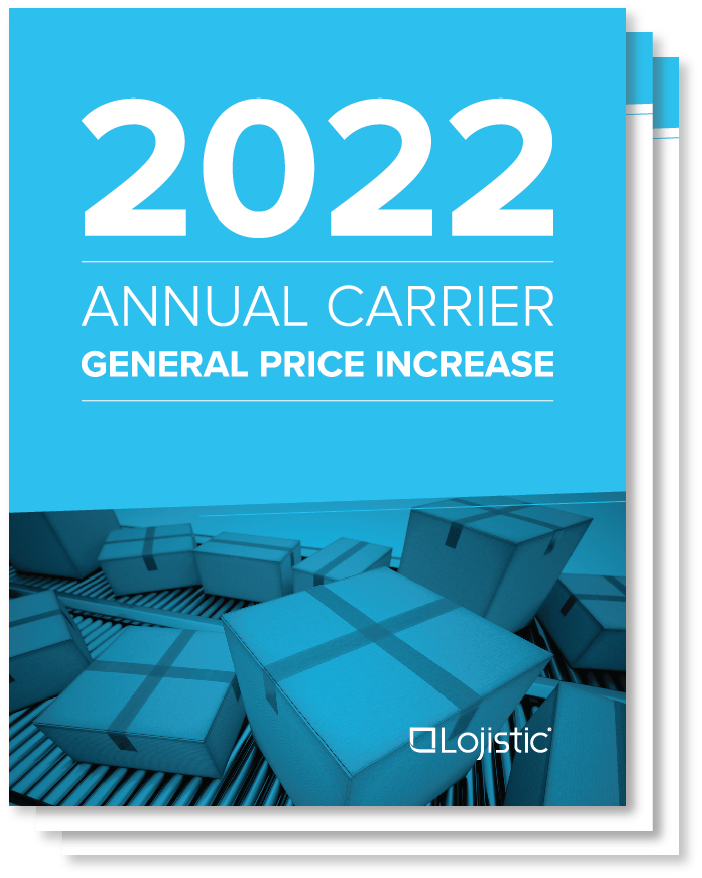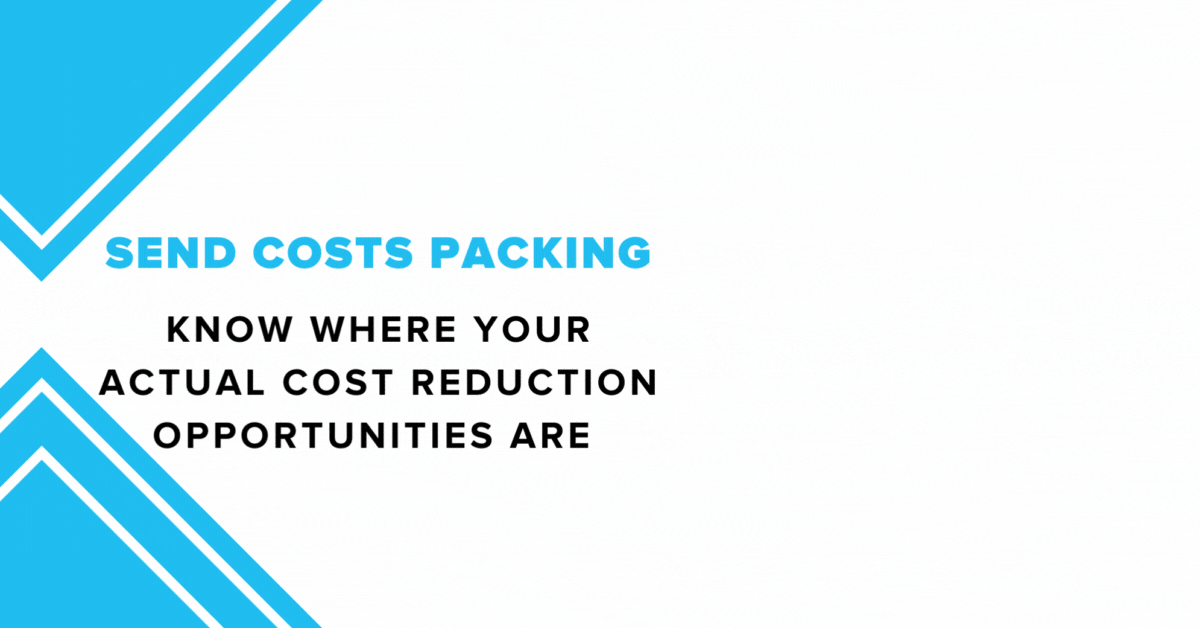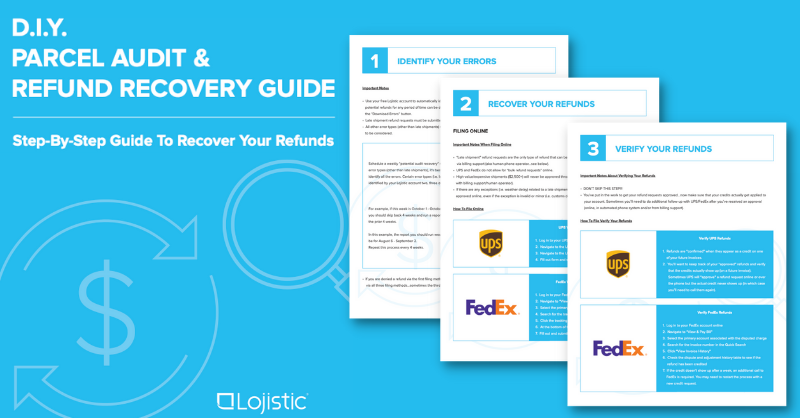The Send Costs Packing method outlines a number of cost savings strategies and tactics that any shipper can apply to control and reduce what they’re paying for shipping services. We’ll be rolling out this ten-part series (!) over the course of a few weeks, so be sure to check back regularly for new and updated information.
You can pick and choose what to use, or try them all. Either way, you're guaranteed to reduce your shipping costs in a meaningful way.
Here's What You'll Learn & How To Apply It:
- Know Where Your ACTUAL Cost Reduction Opportunities Are [read below]
- Make UPS & FedEx PAY YOU For THEIR Mistakes [read below]
- Track ALL Invoice Errors & Service Failures [read below]
- Sometimes The Issue Is YOU, Not Your Carrier [read below]
- ALWAYS Ship With The BEST Service Level Option [coming soon]
- How Does Your CARRIER Views You & Your Shipping Characteristics? [coming soon]
- Understand Where & How Your Shipping Dollars Are REALLY Being Spent [coming soon]
- Identify, Control & REDUCE The Impact Of Surcharges And Fees [coming soon]
- The Best Way To Ask For & Get BIGGER Discounts & BETTER Rates From Your Carrier [coming soon]
- What Are Your Shipping Decisions SAVING or COSTING You? [coming soon]
We want you to understand how to control and reduce your shipping costs - and we want you to be able to do it on your own. In fact, our business is built on that philosophy. It's why we give our technology away for free.
Here's some information that you should be aware of: SHIPPING RATES INCREASE EVERY YEAR! We detail what that has looked like over the past decade. [Click the image below view/download your report]
If shipping is a necessary function for your business and you’re relying on UPS, FedEx, DHL, USPS, Stamps.com, Endicia or any other parcel or freight carrier to fulfill that need - you could be saving a lot.
You’ll get a bunch of how-tos, tips and tricks to cut your shipping costs along with the tools and step-by-step guides to make it happen.
When you control and reduce your shipping costs a lot of good things can happen for your business. Bye-bye bloated shipping bills, hello profits!

Some of the good "stuff" that you can make happen:
- Decrease your online cart abandonment rate
- Create a better experience for your customers
- Maximize your product margins
- Minimize the impact of constantly rising shipping expenses
- Save a "ship"load of money
You’re probably here because you think you're paying too much for shipping. YOU’RE RIGHT.
In fact, it’s never been more expensive to ship. And the carriers are really, really good at maximizing their profits off of you. When you Send Costs Packing, you’ll stop lining your carrier’s pockets. Instead, you’ll have “found” money that can be reinvested into your business.
We’re talking about meaningful savings here. And it’s all money that your carrier would otherwise keep.
Here’s the reality: few understand what their shipping decisions are saving - or costing them.
We’ve implemented the Send Costs Packing method on behalf of our clients to save hundreds of millions of dollars in shipping expenses for companies across all industries. And now, you can do the same for your company.
In fact THOUSANDS of businesses are currently using the strategies we'll outline here to:
- Reduce hard shipping costs by 14.4% or more (sometimes up to 47%!)
- Only pay invoices that are 100% accurate (invoice issues are a major PROBLEM for shippers)
- Mitigate the impact of surcharges and fees (brace yourself, there’s A LOT)
- Eliminate costly operational practices (small tweaks = big savings)
- Get the biggest discounts and best rates they’ve ever had (You gotta know what to ask for!)
If you want to reduce your shipping costs by thousands, hundreds of thousands, or even millions, per year, this is THE method to do it. And it’s totally free to you.
Why do we give all of this away for free? Because we want you to understand your shipping challenges before you consider how to solve them.
A little context is needed before we get to educatin’
UPS, FedEx, DHL and others constantly overcharge their customers. Even savvy shippers are overcharged without knowing. How is this possible?
The #1 reason why most businesses end up overpaying for shipping is because they have no way of understanding what their shipping decisions are actually costing them.
THAT’S BY DESIGN. Shipping is complicated. Pricing is confusing. And the number of variables that dictate what you pay are enough to make anyone’s head spin. Even shipping and supply chain experts need constant refreshers.
Complexity is the foundation the carrier industry is built on.
We’ll let you in on a little secret: The carrier - shipper relationship is actually pretty lopsided. UPS, FedEx, DHL and other carriers can take advantage of their customers with no repercussions. So think of the Send Costs Packing method as couples therapy. But, you know, for you and your carrier.
Part of why the carriers are able to charge so much is because of limited competition. But the main reason is because they keep your data a secret. It’s your data, but they treat it like it’s their own. And worse, they use it against you!
It’s more likely that carriers know more about YOU as a shipper than you DO! It’s how they’re able to know exactly which “strings to pull” to ensure they’re maximizing their profits off of your business.
Sneaky. Sneaky.
Here’s a promise: if you implement the Send Costs Packing method, you’re guaranteed to reduce your shipping costs.
It's undefeated in helping shippers like you save money and time. When you’re able to offer your customers better shipping rates BECAUSE you lowered your own expenses, cart abandonment will drop. Did you know that over 50% of all online shoppers abandon their carts because shipping costs are too high? That’s a TON of potential revenue for your business.
BONUS: Here’s how one online retailer reduced their shipping costs, then reinvested those savings back into their business to fuel growth
But high shipping costs don’t just plague online retailers. The carriers are unbiased in their ability to overcharge businesses, regardless of their sales model!
Wondering if you should offer free shipping? Check out this post first. Here’s a stat you should know: 66% of online shoppers think that shipping should ALWAYS be free, according to Small Biz Trends.
Sending Costs Packing is kinda our ‘thang’. So let’s make it yours too.
Let’s unlock your savings potential.
There are plenty of ways to reduce your shipping costs. Sometimes the issue is with your carrier and sometimes, IT'S ON YOU. We’ll explore in detail below so you’ll know how to identify, then control what’s controllable. Before you can reduce your shipping costs, you need to know what factors are within your control and what isn’t.
Okay, so where do your actual cost savings opportunities lie?
Let’s start with carrier issues.
Costly carrier issues include your contracted rates and discounts, and the number of carrier errors that end up on your invoices. When your carrier makes a mistake, delivers a package late, when a service failure occurs or there’s an erroneous charge on your invoices, you may be entitled to a REFUND. We'll explore this is further detail at a later date, but for now, just know that carrier mistakes impact your bottom line. But that doesn't mean that you should just accept it as the cost of doing business.
BONUS MATERIAL: Here's a Step-by-Step guide to recovering the refunds UPS/FedEx owe you! [click the link or image below to view/download]
But it’s not always the carrier’s fault.
Sometimes you’re the issue. Acknowledging that is the first step to achieving your cost reduction goals. Making operational practices, the packaging you’re using, the way your customer’s delivery addresses are stored in your fulfillment software system, the amount of time you spend processing carrier invoices, your carrier's DIM pricing and the number of shipments you’re sending with a suboptimal service level selection all factor heavily into how much you’re overpaying. You need to consider the total cost of shipping, not just what’s included on your invoices.
In our post: Parcel Shipping, Size Matters, we explain in detail how your packaging might be costing you. Read more here.
In many ways, controlling and reducing shipping costs is like breaking a bad habit. Once you identify the thing you want (or need) to fix, it becomes much easier to actually fix it.
This is the foundation that you need to SEND COSTS PACKING.
What's to Come: we'll get into the nitty-gritty of how you can actually procure your savings. We'll outline the steps you need to take to implement Tip #2: Make UPS & FedEx Pay You For Their Mistakes. We're talkin' REFUNDs here folks!
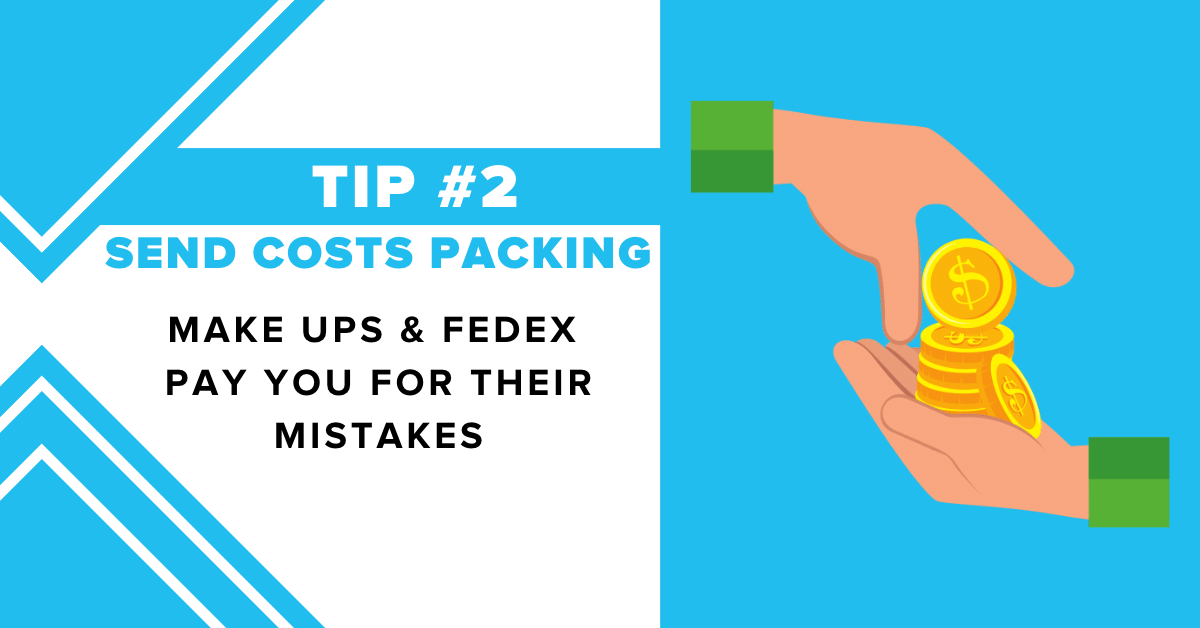
You should be making UPS and FedEx (and/or any other carrier you’re using) pay YOU for their mistakes. We call this process audit and refund recovery, but you may have heard another definition elsewhere. Auditing your shipping invoices means identifying and tracking errors and service failures.
Simply put, there’s a lot of “stuff” on your invoices that shouldn’t be there. That includes paying for a service that you didn’t receive. Imagine going to a restaurant and receiving the wrong order. You’d expect the restaurant to “make good” on their mistake, right? You should have that same expectation of UPS and FedEx. And for the most part, the analogy works. Yet, there’s one major difference between sending back your overcooked steak and securing a carrier refund. Both UPS and FedEx require you to prove that they made a mistake. Then you need to go through their formal refund request process. It’s not enough to simply call out the mistake. You need to prove it, then follow their multi-step process. You can see what the UPS and FedEx refund request process looks like with our FREE guide here.
Both carriers are very sophisticated in how they track packages to keep their networks humming along. In fact, they love to advertise the advanced sophistication of their supply chain networks. So here’s the kicker and if you only take ONE thing away from this post, remember this: BOTH CARRIERS KNOW EXACTLY WHEN A SERVICE FAILURE OCCURS OR WHEN THEY MAKE A MISTAKE ON YOUR INVOICES. But they still make you call them out on their issues, then go through their process to get back the money they owe you. Great customer service, right?
We’ve been managing shipping invoices on behalf of our clients for a long time. And part of that includes chasing down the refunds they’re owed. We’re really good at recovering lost money. That’s why we created the step-by-step guide for DIY refund recovery. Use our tried and true methods to get your money back. There’s more to all of this than just identifying and recovering refunds. Big picture talk: Shippers like you should be treated fairly by the carriers. In no other industry does this level of contempt exist from service provider to customer. Imagine treating your customers the way UPS and FedEx treat you? You wouldn’t. You couldn’t.
Getting UPS and FedEx to pay you for their mistakes is just one way to reduce your shipping costs. But often, auditing your invoices can help uncover other issues within your shipping operations. Keep reading below for more information, including the most common invoice issues. That's one of the reasons why the Lojistic platform is free. We let ANYONE audit their invoices for free. Audit is just one of the many cost saving features of the Lojistic platform.
Looking for someone to audit all your invoices and get the refunds you’re owed? Create your free account.
Lojistic’s free platform does that automatically. Never pay for invoice errors or service failures again. And with Lojistic’s refund recovery, you can sit back and relax while we do all the work.
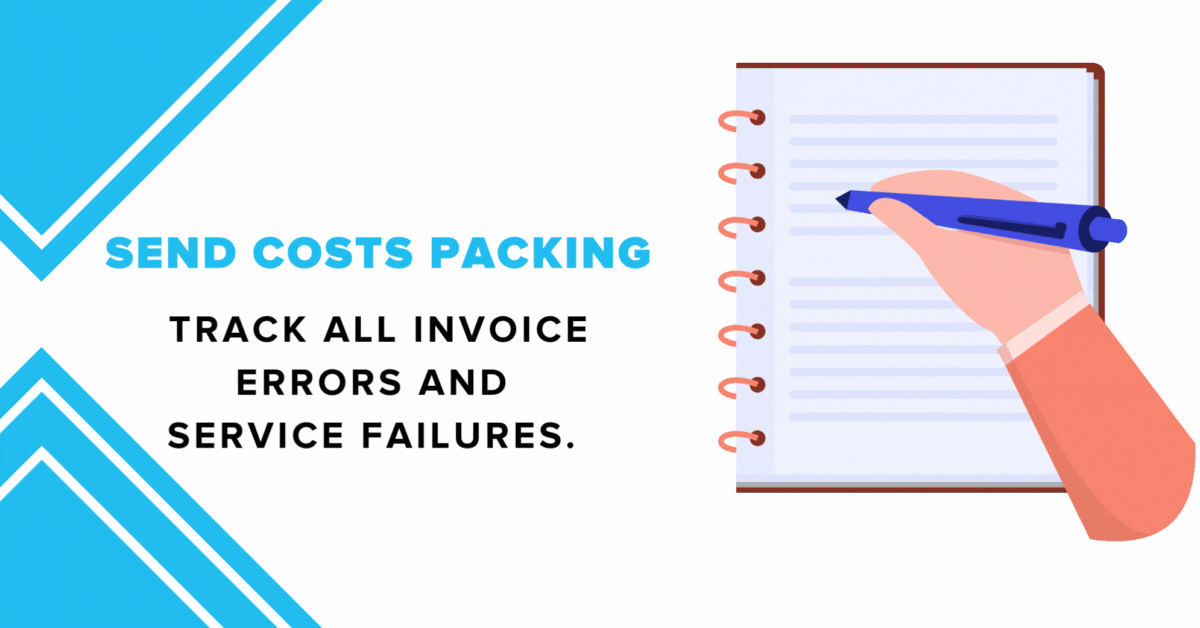
Above we touched on the refund recovery process. Make sure you download your free guide, and if you want your refunds identified automatically, use the free Lojistic platform. Even when your carrier REFUSES to refund you, there’s value in tracking all of your invoice errors. This information helps create a better position for you to ask for bigger discounts and better rates. There’s value in knowing your denied refunds. It can also illuminate where you’re getting ‘dinged’ or where recurring issues might be happening. This is really valuable information that you’ll need when asking your carrier for better rates because you’ll have more insights on WHERE bigger discounts will actually have a positive impact. Lojistic can help you navigate that process.
Here’s an example of one shipper that had more than 65,000 invoice errors over a five year period with over $1 million in denied refunds! 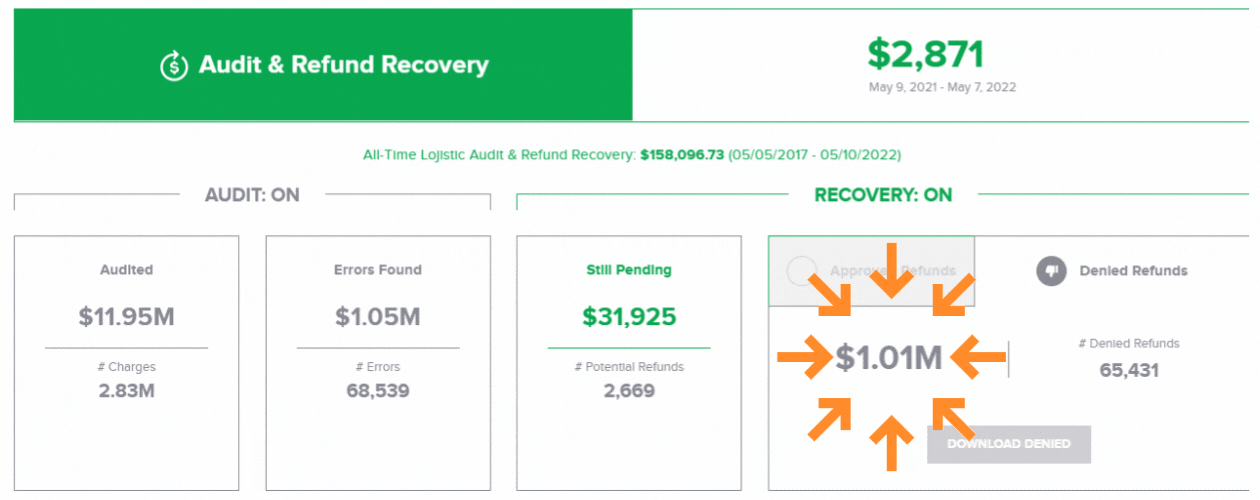
Speaking of carrier rates…do you think that UPS and FedEx offer everyone similar rates? Think again. Even if you have the same “characteristics” as another company, such as location, product size and weight, package volume, service level usage, etc…they might be getting a much better rate than you are. Why is that? The carriers rely on sophisticated data to know exactly how to maximize their profits off of you. So when you’re able to see how invoice issues and carrier mistakes add up, you’re much better equipped to negotiate a better rate and bigger discounts in the areas where you’re being penalized.
Keeping track of all the instances that you should’ve received a refund, but were denied can be a powerful tool in your negotiation tool belt. In other words, KEEP THE RECEIPTS. All of those mistakes really add up. And when you quantify the impact of those mistakes, you might be surprised with how much invoicing issues actually factor into your overall shipping costs.
Are you thinking about asking your carrier for better rates and bigger discounts? Check out how we leverage data AND emotion in every negotiation. Then download this guide. It's the playbook we run to get the best possible rates for all our clients.
Above we mentioned how tracking all of your invoice errors can also illuminate some costly operational issues. Okay, but what does that mean exactly? Stay tuned....we'll detail this next.

It’s time to take a look in the mirror. This might be a tough pill to swallow, but there’s a lot that you might be doing that’s not so good. And those “not so good” operational practices could be the reason why you’re paying way more than you need to be for shipping. UPS and FedEx are both masterful in their ability to squeeze every last penny from their customers. Don’t help them take your money!
Again, it’s worth pointing out that UPS and FedEx know how these issues affect your costs, and COULD share that information with you, but don’t.
Let’s control what’s controllable.
Look for these things in your shipping invoices, because they present a BIG opportunity for you to eliminate bloated cost:
Address Correction Fees: These are extra charges your carrier(s) had to correct or edit to a shipment’s “Ship To” address. Many of these fees can be avoided. You need to make sure your customers “Ship To” addresses are entered into your system correctly. Check to see if the format of your customer’s addresses are compatible with your carrier. Have you been paying for address correction fees? Fix it and save some money. Sometimes that could be a lot of money. If you have customers with recurring orders, you could be paying unnecessarily for every package shipped! We’ve seen this operational issue cost some businesses tens of thousands of dollars per year. And it went undetected!
Late Payment Fees: This one stings. Carriers will often assess penalties when you pay them late. And really, it feels like salt in the wound because your invoices are already too high. Paying your carrier late might feel like this:

Late Payment Fees can be a real cost killer. Both UPS and FedEx late payment fees are 6%! In one particularly egregious case, one business was paying THOUSANDS in late fees each month because of their internal processes. Here’s the kicker - they didn’t even realize they were being penalized for late payments, because the fee would just show up as another line item on subsequent invoices.
Ouch.
In this case, they were able to reverse a number of late payment fees and AVOID ALL FUTURE LATE PAYMENT FEES with Lojistic. We also coded their shipping costs according to their accounting rules and managed carrier payment on their behalf. So instead of hundreds of invoices each month, they consolidated everything into one simple ACH push. Buh-Bye late payment fees!
Extra Large & Heavy Fees: These are "penalty" fees assessed by the carriers when your packages are too big and/or too heavy. Huh? You read that right. UPS and FedEx love packages that cost them less to deliver. Big and heavy packages are bad for business. So they charge you more. Cool. To avoid Extra Large & Heavy Fees, you can use a specialty carrier, or ship the packages that UPS/FedEx would consider Extra Large & Heavy by freight. You can shop rates and carrier in Lojistic's LTL/Truckload Marketplace here.
Billed Weight vs Dimensional Weight vs Actual Weight: Are you paying for the ACTUAL size of your packages, or is dimensional weight a costly issue? If there is a big difference between the actual weight and the billed weight of your shipments, the carrier’s dimensional pricing is negatively affecting your shipping costs. This can be fixed! Here’s another post (with video if you’re into that sorta thing) that provides more detail on Billed Weight, Dimensional Weight & Actual Weight.
Optimizable Air Shipments: Do you suffer from “suboptimal” shipping? If you’re relying too heavily on Air service, you’re probably overpaying. That’s because there’s instances where Ground shipments can be delivered in the same number of days or faster than Air. Ground is always less expensive than Air. Sometimes, the most expensive option isn’t the fastest.
We'll add more more information & give you an easy solution to overcome your costly Air vs Ground issue. Next time.....
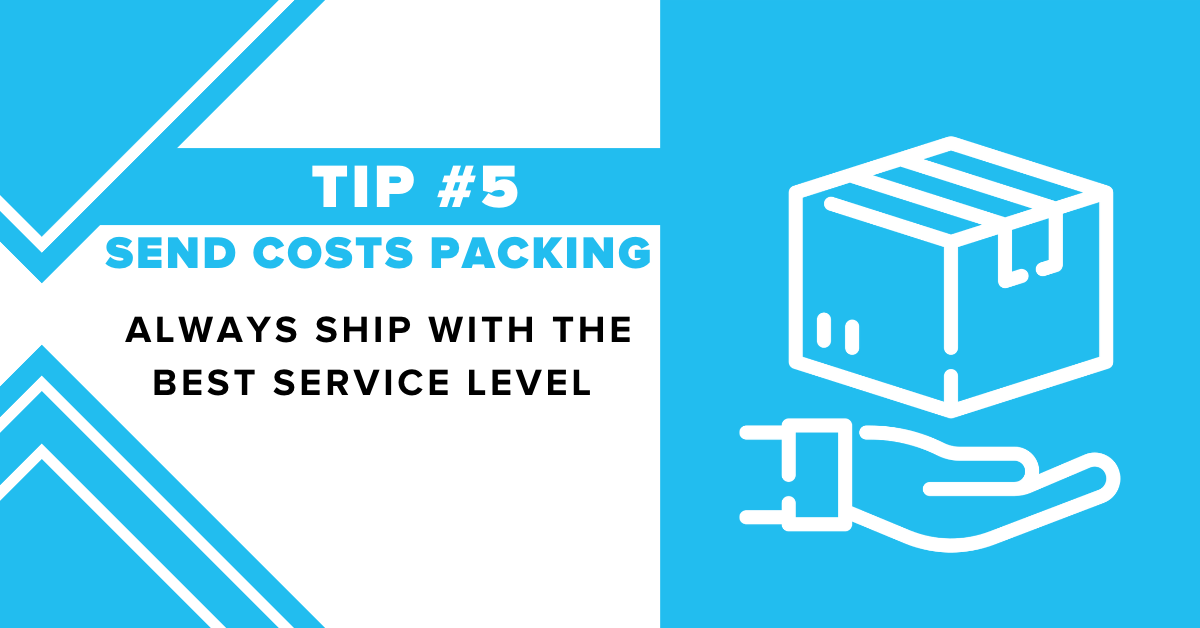
The more expensive shipping option is always the fastest right?
WRONG!
In fact, sometimes Ground services can get your packages to your customers in the same number of days OR LESS than if you had used the pricier Air services.
Within a certain proximity to your warehouse, office, home, distribution center or wherever you’re shipping packages from, Ground will be as fast or even faster than Air.
You just need to know where that geographic “tipping point” is. And that’s where it can get a bit tricky. UPS and FedEx have zone maps, but those are used to determine the COST of the package based on the service level you select. They won’t help you determine WHICH service will be more cost effective.
You can manually track your shipments to establish trends OR you can use Lojistic’s free platform. We created the Air vs Ground analytic to automate and solve this issue. Not sure when you should use an Air service or a Ground service? No worries. The Lojistic platform will identify all those instances for you. Here’s how the Air vs Ground analytic works.
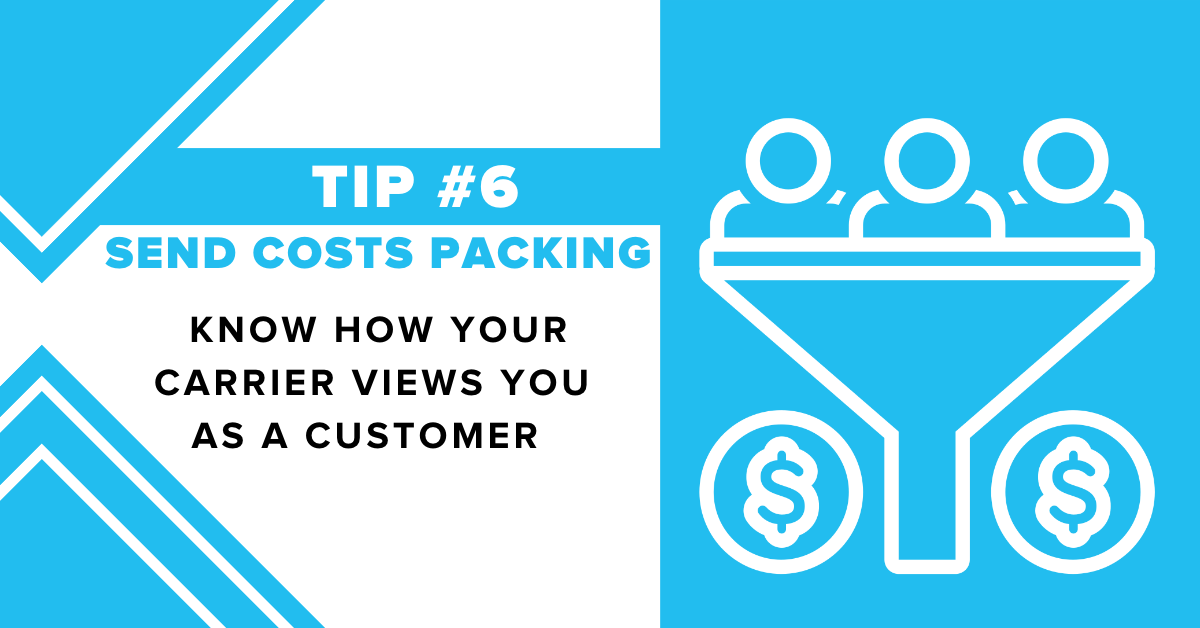
[coming soon!]
